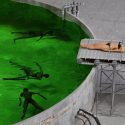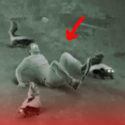Imagine Earth covered in thick sheets of ice. And sea levels so low you could walk to a different continent. This is what our planet would look like during an ice age.
There have been five of them in Earth’s history and they have had a huge impact on our present world. Now, try and imagine an Earth where these ice ages never existed in the first place.
What ecosystems would change? Would humans have evolved? Why do ice ages happen?
Over a century ago, Milutin Milankovitch hypothesized that changes in the Earth’s orbit, the angle of its axis, and the direction of its axis are what create long-term changes to the climate. Known as Milankovitch cycles, they create the seasons we know well, and the ice ages that we’re glad to have skipped.
But what if Milankovitch cycles didn’t exist? Without Milankovitch cycles, Earth would look a lot different. There would have been no ice ages. None at all.
Which means no glaciers to carve out beautiful inland lakes and valleys. It also means Earth’s flora and fauna would have evolved differently.
Grasses initially popped up on Earth before the first ice age. But they truly thrived as the Earth became cooler and drier. Grasslands, tundras, and savannahs grew all over the Earth, replacing dense forests.
With no cooling period leading up to the first ice age, grasses would not have spread so easily. There would be less variety, and the animals that evolved to eat grass would be less abundant.
Horses, giraffes, cows, gazelles, any animal you associate with dry grasslands, would have had less habitat to flourish. Instead, there would be more rainforests left on Earth. The climate in general would be warmer and wetter.
And what about the animals that reigned during the ice ages? Well, we wouldn’t know of any. Saber-toothed cats, giant sloths, mastodons, woolly mammoths, probably would never have graced our planet. But what about us?
Homo erectus first emerged during the last big ice age in the Pleistocene epoch. This is the same time that woolly mammoths roamed the world. A general hypothesis is that the extreme climate forced the evolution of Homo erectus.
They had to change their diets from mostly plants to half plants and half meat, which increased their brain size. They developed the use of tools. And they had to migrate to seek more hospitable land.
Without the ice age forcing the need for adaptation and evolution, humans would probably not exist. Which also means our present Earth would not have any of the human-induced climate changes we are witnessing today.
Even if Homo erectus, which preceded Homo sapiens, evolved regardless of the ice age, our progress as a species would change. Many scientists attribute agriculture to the rapid growth and global expansion of humans. But without the ice age, we could have developed the benefits of agriculture sooner.
In the absence of dry, arid grasslands, we also might have advanced different farming practices which favored forest foods. Our diet might consist of less plants from the grass family, like wheat and oats, and more fruits and vegetables.
For evolution to occur, it needs a catalyst, like an ice age. Earth as we know it today exists because cycles and catalysts have pushed living organisms to adapt. It would be a very different planet without Milankovitch cycles and the ice ages they produce.
Sources
- “The Pliocene Epoch”. 2021. ucmp.berkeley.edu.
- “Pleistocene Epoch: Facts About The Last Ice Age | Live Science”. Kim Ann Zimmermann. 2021. livescience.com.
- “Milankovitch (Orbital) Cycles And Their Role In Earth’s Climate – Climate Change: Vital Signs Of The Planet”. Alan Buis. Climate Change: Vital Signs Of The Planet.
- “Ice Age”. 2021. HISTORY.
- “What causes an ice age and what would happen if the Earth endured another one?”. 2016. abc.net.au.



























